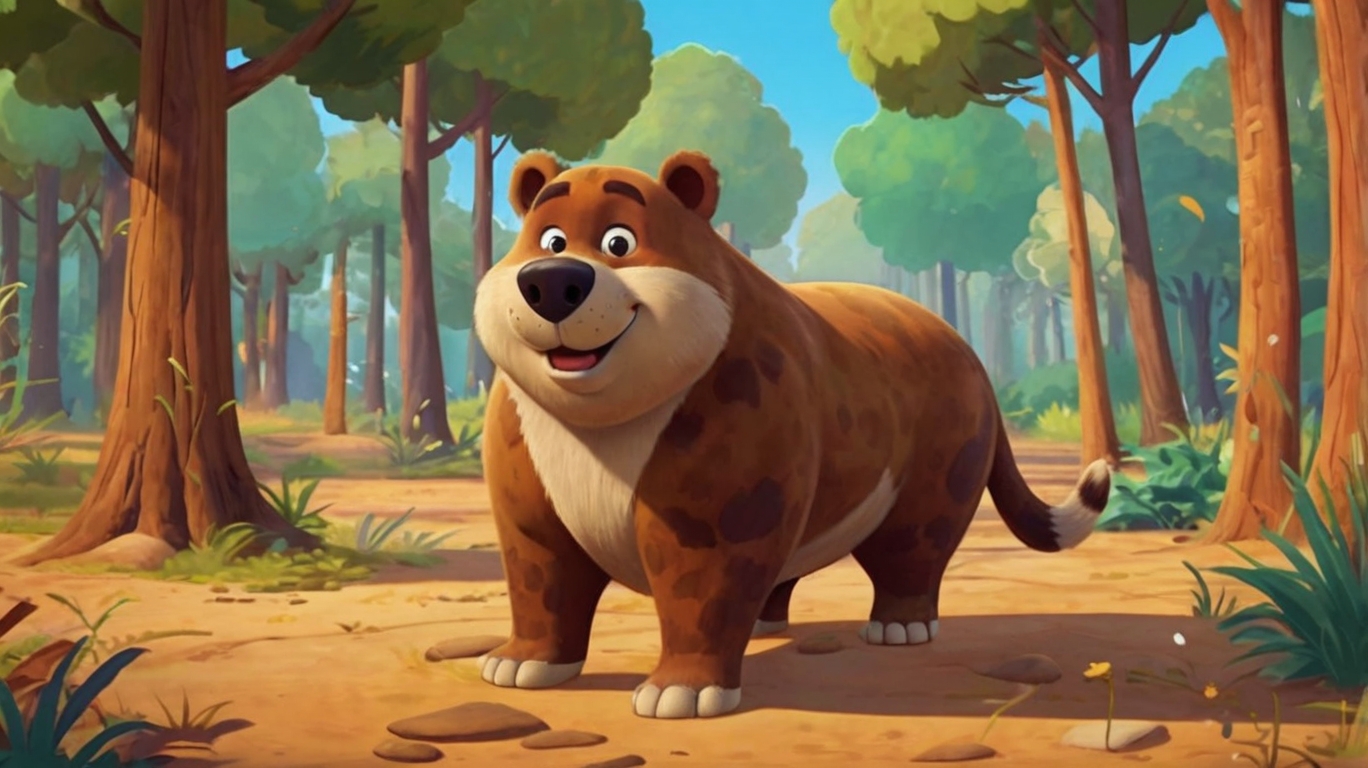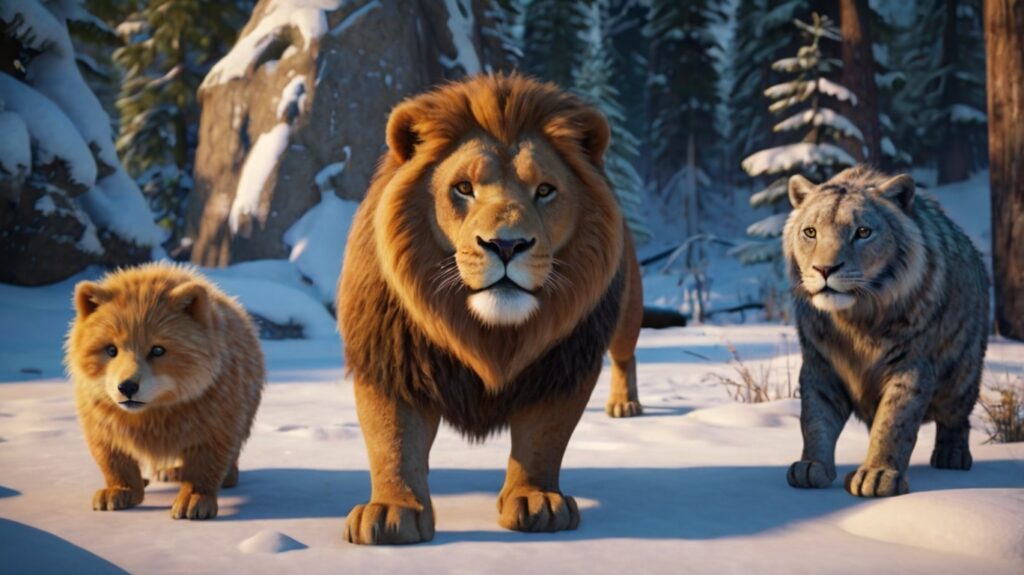
Cartoons are an old and well-liked option in the video game industry. The flamboyant features, vivid colors, and whimsical charm of this style won over audiences of all ages. From classic platformers to contemporary RPGs, cartoon imagery in video games brings a unique sense of inventiveness and nostalgia. In this post, you will examine the attractiveness of cartoon art in games and discover how to incorporate it into your work.
The Charm of Cartoon Art Style
Universal Appeal
Cartoon art is a flexible option for a wide range of audiences because it transcends age boundaries. Its approachable and lighthearted style can captivate players of all ages, fostering a generational bond.
Expressive Characters
The exaggerated features and expressions typical of cartoon art allow for strong character designs. Emotions and actions can be conveyed vividly, enhancing storytelling and player connection.
Imaginative Worlds
The fanciful settings found in cartoon art can pique the imagination. This aesthetic allows you the creative freedom to create distinctive and engaging gaming worlds, whether they are set in quirky urban environments or lush, enchanting forests.
The Advantages of Cartoon Art in Games
Timelessness
Unlike hyper-realistic graphics that may age quickly with advancing technology, cartoon art retains its charm and relevance. Games like “The Legend of Zelda: The Wind Waker” and “Cuphead” remain visually appealing years after their release.
Performance Friendly
In general, cartoon art uses less resources than realistic images. This makes it a viable option for many developers as it can lead to improved performance across a range of platforms, including mobile devices.
Creative Flexibility
The whimsical nature of cartoon art allows for creative liberties. Designers can bend the rules of reality, introducing playful mechanics and visual effects that wouldn’t fit in a more realistic setting.
Implementing Cartoon Art Style in Your Game
Defining Your Vision
Start with a clear vision of your game’s aesthetic. Look at existing games, animations, and comics for inspiration. Create mood boards and gather references to define the visual language you want to use.
Character Design
Use distinctive shapes and emotional traits to develop figures that will stick in the mind. Make them stand out by using bold colors and powerful lines. Make sure their character and function are conveyed through their design.
Environment Design
Create spaces with lots of detail but a unified aesthetic. To construct immersive worlds, employ wacky details and exaggerated dimensions. Take note of the lighting and color schemes to improve the ambiance and mood.
Animation
Fluid and exaggerated animations are a hallmark of cartoon art. Focus on smooth transitions and dynamic poses. Incorporate techniques like squash and stretch to add a lively feel to character movements.
User Interface
Make certain the UI components you use are consistent with the overall artwork. To develop a unified aesthetic, use eye-catching colors, bold typefaces, and playful iconography. Maintain an easy-to-navigate, intuitive design.
Iterative Process
As you create prototypes, get input from your group and possible players. Make revisions to your designs in response to user input to ensure the artwork appeals to your target and improves the gaming experience.
Examples of Iconic Cartoon Art Style Games
- Cuphead: This game is a masterclass in cartoon art, drawing inspiration from 1930s animation. Its hand-drawn characters and environments, along with fluid animations, create a nostalgic yet fresh visual experience.
- Rayman Legends: “Rayman Legends” blends contemporary animation methods with hand-drawn components. It stands apart from other titles thanks to its vibrant, lush environments and quirky character designs.
- Overwatch: While leaning towards a more stylized realism, “Overwatch” incorporates cartoon elements in its character design and animations. The game’s vibrant and diverse cast demonstrates the flexibility of blending cartoon art with other styles.

Risks and Disadvantages of Using Cartoon Art Styles in Games
The colorful and whimsical nature of cartoon imagery has made it a popular choice in game creation. Like every artistic movement, it is not without risk and drawbacks, though. Making wise decisions and developing a winning game requires an understanding of these difficulties. The following are some of the main dangers and drawbacks of employing cartoon art.
Limited Appeal to Certain Audiences
- Perception as Childish: Cartoon graphics may seem too simple or juvenile to some prospective players, especially if they prefer more realistic or mature imagery. This may reduce the attraction of your game to older players who might favor realistic or gritty graphics.
- Genre Limitations: Certain game genres, such as horror or military simulations, may not be well-suited to a cartoon art style. The whimsical and lighthearted nature of cartoons might undermine the intended atmosphere and tone of these genres.
Creative Constraints and Misalignment
- Misaligned Tone: If cartoon graphics are not done carefully, they may clash with the game’s plot or gameplay style. For example, a game with dark, serious themes may need to be able to convey its message better with a cheerful, cartoonish graphic style.
- Stereotypes and Clichés: The game feels less inventive at moments when the cartoon art style resorts to overused clichés and stereotypes. It can be difficult, but to stand out, you must avoid clichés and go for distinctive designs.
Technical and Production Challenges
- High-Quality Animation Demands: Animated cartoons frequently rely significantly on smooth, high-caliber animation. It can take a lot of resources and knowledge to create animation at this level, which could lengthen the production process and raise prices.
- Consistency Across Assets: It can be difficult to keep the art style of all game elements consistent. Changes in the environments, UI elements, and character designs might throw off the overall look, so the creative team must work together and pay close attention to details.
Market and Competitive Risks
- Market Saturation: The popularity of the cartoon art style means there is substantial competition. Standing out in a crowded market with many similar-looking games can be difficult. Innovating within the style and finding a unique visual niche is essential.
- Misleading Marketing: The playful and colorful nature of cartoon art can sometimes mislead potential players about the game’s content. For instance, a game with complex mechanics or mature themes might be overlooked by players who assume it’s meant for children.
Player Expectations and Feedback
- Player Expectations: Because of the cartoon illustration style, players may have specific expectations, such as simple and cheerful gameplay. Should the game present a more demanding or somber experience, it may cause a discrepancy between player expectations and actual disappointment.
- Subjectivity in Art Style: Art style preferences are highly subjective. While some players may love the cartoon art, others may not be as appreciative. Balancing artistic vision with broad appeal can be challenging.
Mitigating the Risks
While the cartoon art style presents several risks and disadvantages, there are strategies to mitigate these challenges:
- Clear Target Audience: Identify and comprehend who your target market is. Make sure the marketing and art style are tailored to this audience and that the images meet their expectations and tastes.
- Cohesive Design: Make sure the cartoon artwork complements the story, tone, and gameplay of the game. A seamless and engrossing experience can be produced by maintaining consistency in the visual and thematic components.
- Unique Visual Identity: Make an effort to be unique in your artistic approach. Try out some original character designs, color schemes, and visual themes to differentiate your game from competitors and steer clear of overdone clichés and tropes.
- High-Quality Execution: Invest in talented animators and artists who can bring cartoon art to life with smooth animations and excellent graphics. To keep a professional appearance, all assets must be of the same caliber.
- Transparent Marketing: Clearly communicate the game’s content and tone in your marketing materials. This helps set accurate player expectations and attract the right audience for your game.
Conclusion
Games with a cartoon aesthetic combine nostalgia, creativity, and accessibility in a delightful way. Because of its timeless appeal and practical features, developers find it to be an appealing solution. A game with broad appeal can be made by prioritizing well-developed characters, inventive settings, and fluid animations.
Although cartoon art provides many advantages, there are also some risks and drawbacks to take into account. Melior Games understands the importance of finding a balance between the demands of players, the tastes of the general public, and creative vision. Cartoon art can be a useful element in your toolkit for game development if you plan and execute it properly.
Cartoon art can amuse and delight gamers, and that is what we at Melior Games believe. Accept the whimsical appeal of this artistic movement and allow your creativity to soar. Cartoon design can help you create a memorable gaming experience, whether you’re making a whimsical adventure or a lighthearted platformer.




